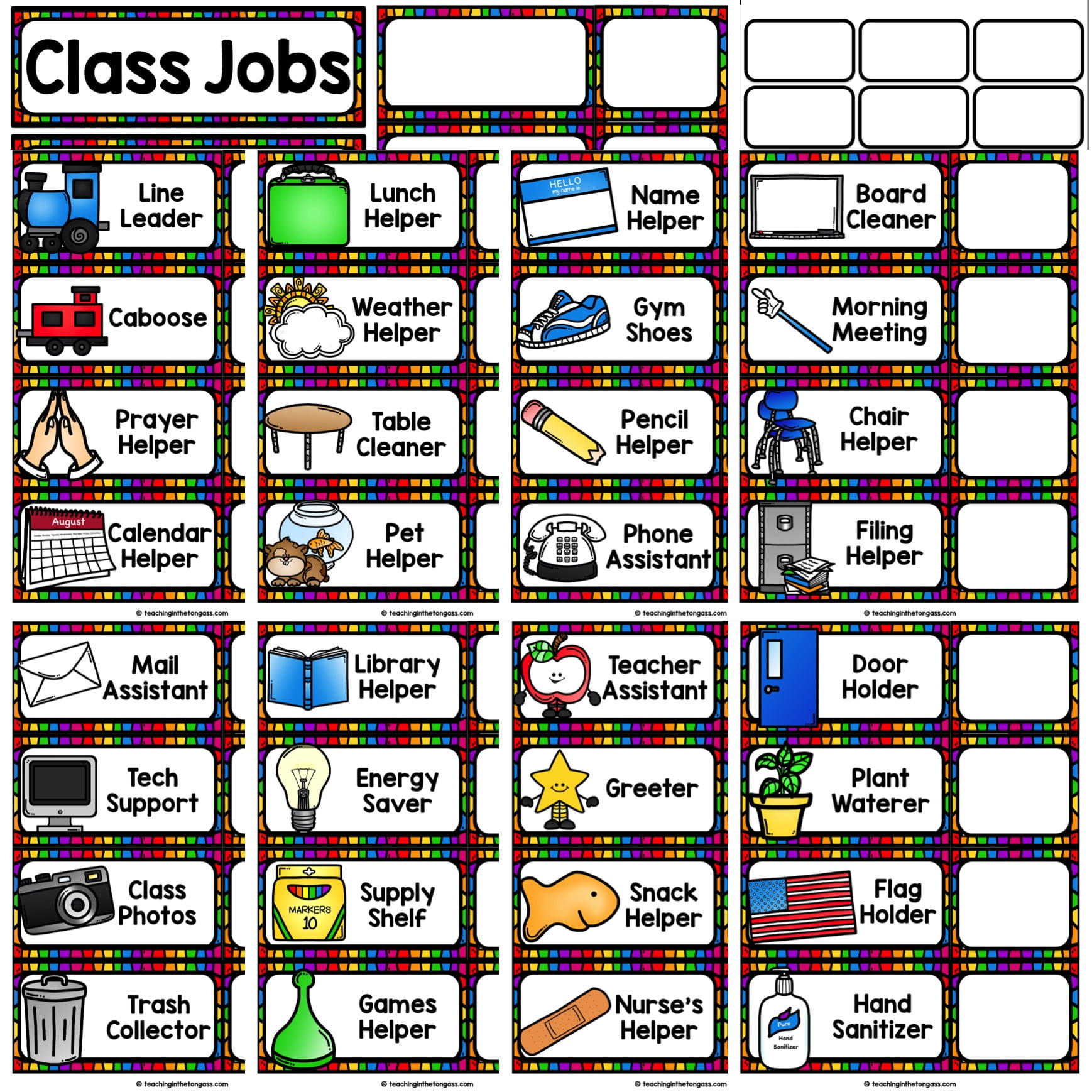Introduction
Creating a classroom jobs chart is a great way to promote responsibility and engagement among students. By assigning specific tasks to each student, you can create a sense of ownership and teamwork within the classroom. This article will explore the benefits of implementing a classroom jobs chart and provide ideas for different job roles.
Benefits of a Classroom Jobs Chart

There are numerous benefits to using a classroom jobs chart. Firstly, it teaches students about responsibility and the importance of fulfilling their duties. By assigning tasks, students learn the significance of completing their jobs on time and to the best of their abilities.
Furthermore, a classroom jobs chart promotes a sense of community and teamwork. Students learn to rely on each other and work together to maintain a clean and organized learning environment. They also develop essential life skills such as time management, organization, and problem-solving.
Additionally, a classroom jobs chart can help create a positive classroom culture. Students feel valued and appreciated when they have a specific role to fulfill. It also reduces teacher workload, as students take on responsibilities that would otherwise fall solely on the teacher.
Ideas for Classroom Jobs

When creating a classroom jobs chart, it's important to consider the age and abilities of your students. Here are some ideas for different job roles:
1. Line Leader: The line leader leads the class during transitions, ensuring students move quietly and efficiently.
2. Door Holder: This student holds the door open for classmates as they enter or exit the classroom.
3. Librarian: The librarian is responsible for organizing books, maintaining the classroom library, and assisting peers in finding appropriate reading materials.
4. Pencil Sharpener: This student keeps the pencils sharp and ensures there are always enough available for everyone.
5. Paper Collector: The paper collector collects assignments or other papers and delivers them to the teacher.
6. Calendar Keeper: This student updates the classroom calendar, marking important dates and events.
7. Materials Manager: The materials manager is in charge of distributing and collecting supplies such as textbooks, notebooks, and art materials.
8. Technology Assistant: This student helps with setting up and troubleshooting classroom technology, such as computers or projectors.
These are just a few examples, but you can tailor the job roles to fit the specific needs and dynamics of your classroom.
Implementing the Classroom Jobs Chart

To implement a classroom jobs chart, follow these steps:
1. Introduce the concept: Explain to your students the purpose and benefits of having a classroom jobs chart. Make sure they understand that each job is important for the smooth running of the classroom.
2. Assign roles: Assign specific jobs to each student, considering their abilities and interests. Rotate the jobs periodically to give everyone a chance to experience different responsibilities.
3. Create a visual chart: Design a chart that clearly displays each job role and the student assigned to it. You can use a whiteboard, poster, or digital display.
4. Provide training: Ensure that each student understands their job responsibilities and knows how to perform them effectively. Offer guidance and support as needed.
5. Monitor and provide feedback: Regularly check in with students to ensure they are fulfilling their duties. Recognize and appreciate their efforts, and provide constructive feedback if necessary.
Conclusion
A classroom jobs chart is a valuable tool for promoting responsibility, teamwork, and a positive classroom culture. By assigning specific tasks to students, you empower them to take ownership of their learning environment. Implementing a classroom jobs chart can have long-lasting benefits for both students and teachers.